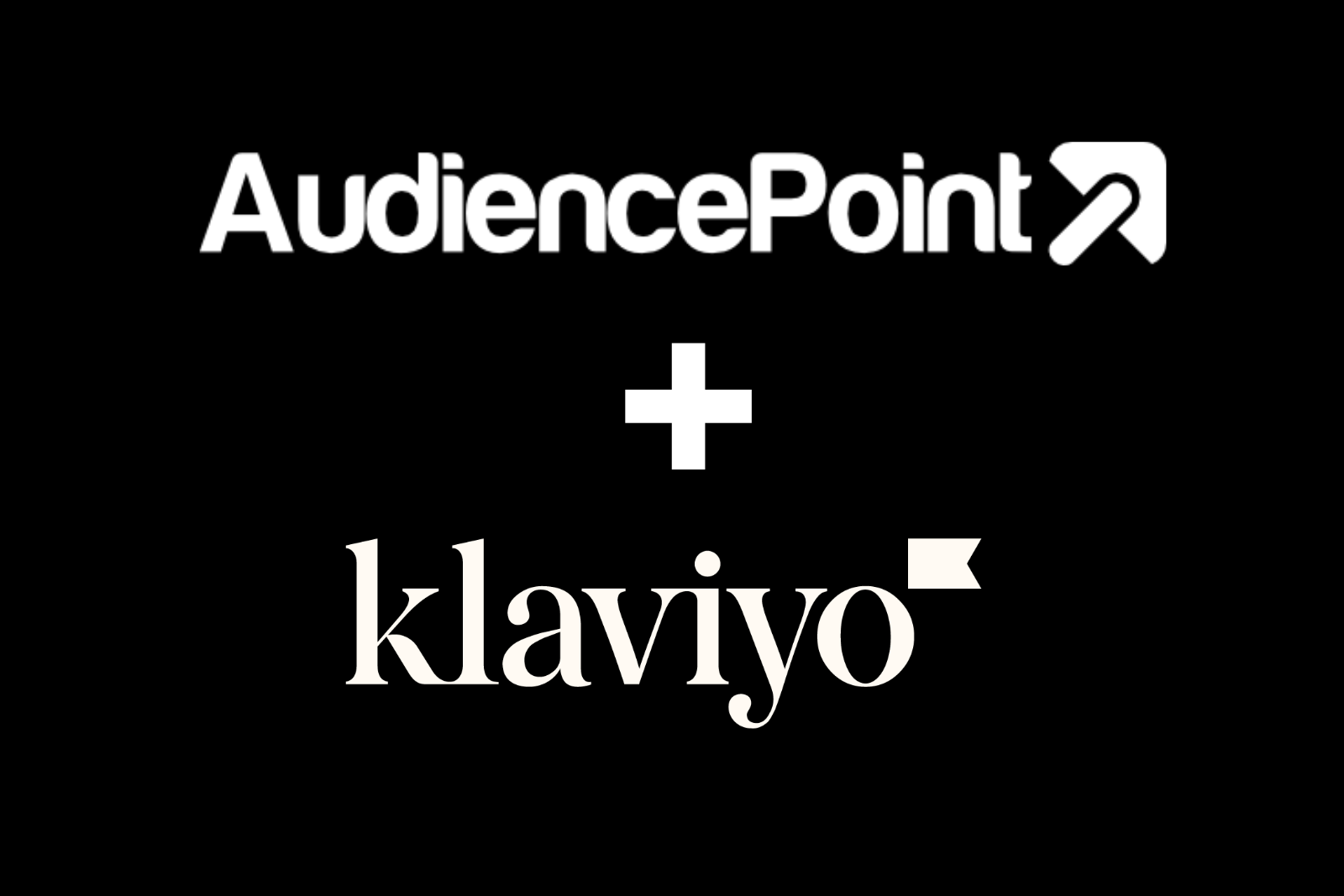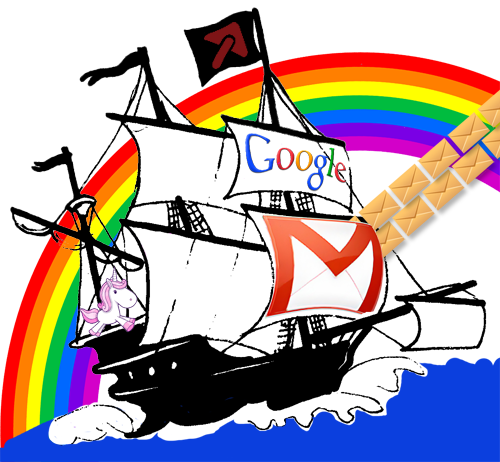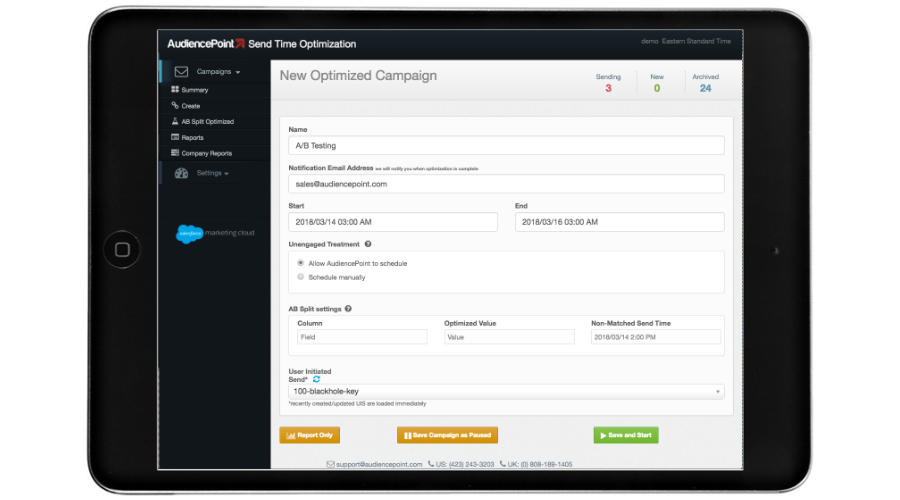AudiencePoint is thrilled to announce our new integration with Klaviyo! AudiencePoint is looking for partners to pilot our...
Introduction: The Impact of AI on Email Marketing
Email marketing has long been a cornerstone of digital communication, delivering timely, relevant, and measurable touchpoints between brands and their audiences. Yet, as audiences become more sophisticated and inboxes busier, standing out and achieving measurable impact has become a formidable challenge. The emergence of AI email marketing tools marks a seismic shift in how enterprise marketers can strategically maximize ROI, improve performance results, and outpace competitors in the digital marketing landscape.
The last decade ushered in rapid digitization, but the past few years have seen a revolutionary leap: the integration of artificial intelligence across the email marketing stack. Once considered a futuristic luxury, AI is now a mission-critical resource, driving hyper-personalized content, predictive segmentation, real-time optimization, and next-level performance analytics for AI email campaigns and large-scale enterprise communications. Today, AI is central to developing a successful email marketing strategy, enhancing personalization, automation, and campaign optimization to achieve higher engagement and efficiency.
Why AI Has Changed the Game in Email Marketing
The application of AI email marketing tools goes far beyond simple automation. Today’s sophisticated platforms analyze real-time signals, user behaviors, and contextual preferences to deliver the right message to the right person at precisely the right time. This intelligence ensures that campaigns are not just sent, but genuinely resonate, resulting in higher engagement, improved deliverability, and true business impact.
AI’s most significant benefits in email marketing are rooted in its ability to learn from massive data sets and adapt on the fly. For enterprise marketers, this means harnessing email marketing trends and customer insights in ways that were unimaginable just a few short years ago. The key? Enabling marketing teams, especially email marketing teams, to do more with less—empowering them to create personalized, targeted campaigns, improve open rates, and drive operational efficiency, greater campaign precision, and consistently superior results.
Benefits of Integrating AI into Your Email Marketing Strategies
The advantages of embedding AI into your marketing workflow are extensive. Marketers using AI-driven solutions consistently report stronger audience engagement, improved inbox placement and deliverability rates, and increased revenue per email sent. From intelligent content generation to automated optimization of send times and subject lines, AI is removing the guesswork and delivering provable, repeatable results at scale.
Equally important, AI-driven analytics empower marketing executives to finally achieve end-to-end visibility into the critical metrics that matter most—such as inbox placement, subscriber engagement, and campaign ROI—turning data into actionable insight. With this visibility, AI enables marketers to make data-driven decisions that improve campaign effectiveness and personalization.
What To Expect in This Guide
This comprehensive guide will answer the industry’s most pressing questions, including the following:
- What is the 80/20 rule in email marketing?
- How do you effectively use AI to power your email strategy?
- What is the difference between deliverability and inbox placement?
- What are the best practices for leveraging AI for measurable results?
With a focus on practical strategies and advanced tools like AudiencePoint, you’ll discover how to transform the way your enterprise engages, converts, and retains subscribers in 2025 and beyond.
What Is the 80/20 Rule in Email Marketing?
The 80/20 rule—also known as the Pareto principle—states that roughly 80% of your results come from 20% of your efforts. In email marketing, this often manifests as 20% of your subscribers contributing to 80% of opens, clicks, or revenue. Understanding and leveraging this rule can completely transform your ROI, moving your strategy away from generic mass sends and toward high-impact engagement with your most valuable audience segments. Identifying these segments requires analyzing customer behaviors such as open rates, click-throughs, and purchase intent.
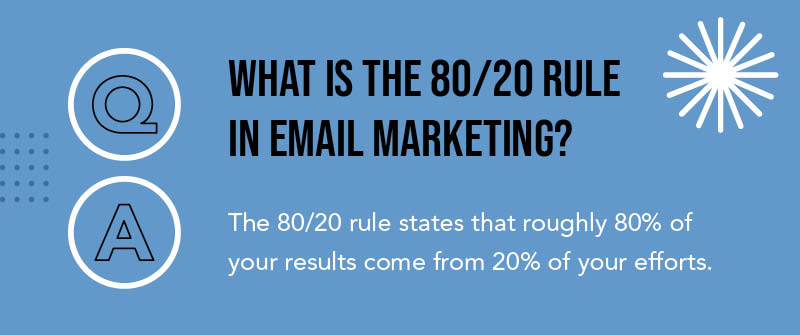
How the Pareto Principle Applies to Email Marketing
Applied to the inbox, the 80/20 rule means that a small but highly engaged group of subscribers drives most of your true marketing value—opens, website visits, conversions, and ultimately, revenue. Typical email data proves this: a handful of engaged readers consistently interact with your emails, while a long tail of less engaged subscribers contributes little, or even risks email deliverability issues due to inactivity. By analyzing customer behavior, marketers can segment their lists and target the most engaged subscribers for more effective campaigns. Email marketers who continue to treat their lists as monolithic groups risk lower performance and higher spam complaints.
Examples in Email Marketing Campaigns
Imagine a monthly newsletter sent to a list of 100,000. Data shows that 20,000 subscribers open and click almost every time, while the remaining 80,000 rarely interact. Instead of pushing constant content to everyone (which may harm inbox placement), marketers should prioritize and reward their engaged 20% with tailored offers, VIP content, or early-bird notifications, thus maximizing impact. Meanwhile, the less engaged 80% can be entered into re-engagement campaigns or reduced send frequency to maintain list health and sender reputation.
How AI Tools Uncover Your Top 20%
Traditionally, pinpointing your key audience relied on basic email marketing analytics. Today, AI-driven platforms—like the AI email marketing generator tools that are now available—can instantly analyze thousands of behavioral signals using machine learning algorithms to identify the 20% most engaged contacts based on real activity: open rates, click-through rates, conversions, and even predictive engagement modeling. These insights aren’t static; AI platforms adapt to signal shifts, giving you a dynamic and up-to-date view of your VIP segment.
Strategies To Maximize Impact With the 80/20 Rule
Once you’ve identified your top 20%, the next step is to act on these insights. AI-driven segmentation allows you to create hyper-personalized messaging that fits each contact’s behavior, interests, and buying journey. By combining the Pareto principle with AI, you can automate individualized campaign flows, reserve exclusive offers for your best customers, and optimize sends for both engagement and deliverability. For the remaining 80%, AI can help determine the best reactivation or nurture strategy—but always with inbox health in mind. Tools like AudiencePoint actively monitor how engagement levels affect deliverability and ensure that concentrated focus on the right 20% boosts your campaign’s overall performance and ROI. AI also enables continuous optimization of audience targeting and messaging, ensuring sustained improvements and long-term results.
The Difference Between Email Deliverability and Inbox Placement
Email deliverability and inbox placement are related but fundamentally distinct concepts that every enterprise email marketer must grasp for campaign success. Deliverability answers the question, “Did the email make it to the recipient’s mail server without bouncing?” Detecting and removing invalid email addresses is essential for maintaining high deliverability and reducing bounce rates. However, this metric fails to reveal what truly matters next: where did that message actually land? Only inbox placement clarifies whether your carefully crafted content appeared in the recipient’s primary inbox or languished unseen in spam, promotions, or other folders.
Even stellar deliverability rates are misleading if large volumes of your emails are consigned to the spam folder. Industry averages hover around 80% for deliverability, but marketers aiming to maximize impact should push for inbox placement rates of 95% and above. When poor placement goes unaddressed, both engagement and sender reputation enter a downward spiral, impacting long-term ROI and potentially causing lasting damage that is difficult and costly to reverse. This is why smart marketers now demand granular inbox placement visibility as a standard KPI.
Why Inbox Placement Matters More Than Deliverability Rates
Focusing solely on the deliverability rate provides false comfort. If your campaign lands in the spam folder, it still registers as “delivered”—yet the reality is your end-user never engages, costing you revenue and campaign momentum. Inbox placement rates measure how much content actually surfaces in the main inbox, unlocking a much clearer window into your true reach and performance. Inbox placement, not just deliverability, is what impacts open rates, clicks, and conversions, making it the ultimate lever for fine-tuning engagement and maximizing customer lifetime value.
How Traditional Measurement Methods Fall Short
Historically, marketers have relied on seedlist data and panel monitoring tools to estimate inbox placement. While widely used, both methods are inherently flawed. Seedlists use artificial addresses and often fail to reflect the complex interactions of real-world user inboxes or dynamic changes in spam filtering. Panel data, drawn from a narrow pool of monitored users, is biased by specific device or behavioral trends, offering only a fragmented perspective of your actual audience. These gaps in accuracy and scale mean that critical segments of your subscriber base could be at risk, unseen until engagement metrics collapse.
Leveraging Modern AI-Driven Tools Like AudiencePoint
This is where leading-edge AI email marketing tools—such as those from AudiencePoint—dramatically raise the standard. AudiencePoint’s proprietary technology monitors the true behavioral signals across your actual recipient base, harnessing data on send, open, click, bounce, and unsubscribe events from real subscribers, not synthetic data sets. Real-time API scans are also used to ensure data privacy compliance and secure sensitive customer information, helping marketers adhere to regulations like GDPR and CCPA. By comparing your campaign activity against a vast, real-world data pool, AudiencePoint reveals exactly which subscribers see your emails in their inbox, which end up in spam, and which users are disengaged or at risk.
More importantly, AudiencePoint translates these powerful insights into actionable recommendations, allowing you to dynamically suppress or re-engage segments, refine your targeting, and optimize both email deliverability and inbox placement with confidence. This represents an enormous leap beyond guesswork, empowering enterprise marketers to diagnose placement issues early and course-correct before business impact occurs.
The Email Funnel: From Send to Click
The modern marketer’s accountability now extends across the entire funnel: Send → Delivered → Inboxed → Open → Click. Historically, the critical “Inboxed” layer was the missing link—but with AudiencePoint’s AI-powered tools, you unlock holistic visibility and unprecedented control. When every step is measured, optimized, and aligned, you build campaigns that don’t just dodge technical failure—they win the inbox, drive engagement, and deliver ROI that transforms the bottom line. Tracking email performance at each stage is essential for maximizing results.
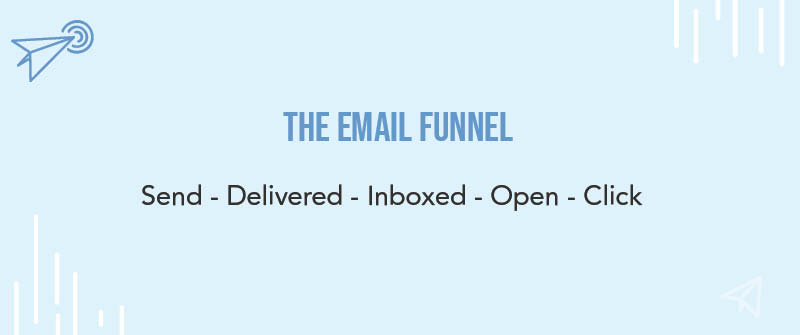
How To Use AI to Help With an Email?
Leveraging AI email marketing tools can dramatically streamline and enhance every stage of your email campaigns—from drafting the perfect subject line to delivering personalized, targeted content at the ideal moment. Modern AI offers more than simple automation; it delivers predictive, data-driven insights that drive engagement, optimize performance, and ultimately boost ROI. By integrating AI into your email marketing workflow, you enable your team to work smarter, not harder. Using an ai tool can assist in content creation, generate subject lines, and help optimize your campaigns, supporting marketers while still requiring human oversight to ensure quality and relevance, maximizing the impact of each send across your entire subscriber base.
Automating Subject Line and Content Creation
AI email marketing generators have revolutionized the way marketers write and refine email copy. Powered by advanced natural language processing (NLP), these AI email marketing tools can analyze historical performance data, audience preferences, and trending language to suggest, or even automatically craft, engaging subject lines and relevant body content. AI can also write email subject lines that are optimized for engagement, using data-driven insights to maximize open rates and campaign effectiveness. This eliminates guesswork and removes creative bottlenecks, allowing your team to focus on big-picture strategy while the AI iterates on copy and layouts that will resonate with your audience. For enterprise brands, this means consistency and scalability—AI ensures every email aligns with established brand voice guidelines while remaining fresh and personalized.
Segmenting Audiences for Personalized Messaging
Utilizing AI for audience segmentation enables you to deliver personalization at a scale that was previously impossible. Rather than segmenting subscribers by a handful of static behaviors or demographic details, AI analyzes myriad signals to form dynamic, evolving segments, such as predicting churn risk, buyer intent, or interest categories based on deep behavioral analysis. This allows marketers to deliver personalized content to their target audience, improving engagement and campaign effectiveness. The result: each subscriber receives messages tailored to their preferences, recent actions, and predicted needs. Personalized campaigns have been shown to boost open and click rates significantly, while reducing unsubscribe and spam complaints, moving your campaigns ever closer to inbox placement perfection.
AI-Powered A/B Testing and Optimization
AI email marketing tools supercharge traditional A/B testing by moving from static, manual comparisons to continuous, AI-driven optimization. The AI can test multiple variables—subject lines, senders, images, CTAs, layouts—at once, analyze performance in real time, and shift sending strategies mid-campaign to maximize open and click rates. AI-driven optimization doesn’t just save time; it quickly learns which combinations of factors work best for specific segments or regions. These capabilities help email marketing increase performance by boosting open and click rates, giving you an unfair competitive advantage in the crowded inbox.
Optimizing Send Times With Predictive Analytics
Deliverability is not just about hitting the mail server—it’s about landing in the primary inbox at the moment your recipient is most likely to engage. AI email marketing tools leverage predictive analytics to analyze subscriber behaviors, time zones, device usage patterns, and historical engagement data. By understanding user behavior, AI can optimize send times to ensure emails are delivered when recipients are most likely to engage. This enables marketers to deploy “send time optimization,” ensuring that each recipient receives your message at their personal peak engagement window. For enterprise marketers managing global lists, this can mean significant lifts in open and click rates while decreasing wasted sends and reducing the chance of spam placement.
How Does AI Enhance Content Optimization for Email Marketing?
AI-powered content optimization uses advanced algorithms to continuously analyze what resonates with your audience, looking at everything from word choice and image selection to length and structure. AI-powered dynamic content enables emails to adapt in real time to subscriber preferences, increasing engagement and ROI. By testing variants in real time against engagement metrics, AI quickly identifies winning combinations and replicates them across campaigns. As patterns emerge, the AI evolves its recommendations, ensuring ongoing improvement and adaptation to changing subscriber preferences. This persistent optimization loop is vital for staying ahead of competitors and consistently delivering compelling, high-performing email content at scale.
What Are the 5 Ts of Email Marketing?
The 5 Ts of email marketing—Target, Tease, Teach, Test, and Track—form the bedrock of successful, high-performing campaigns. These foundational practices ensure that enterprise marketers send the right message to the right people at the right time. By leveraging AI tools to optimize marketing emails—such as personalizing content, refining subject lines, and determining optimal send times—marketers can achieve higher engagement and better results. With the advent of AI email campaign tools, deploying and optimizing each stage has never been more attainable or impactful, particularly for large-scale senders aiming for excellence in email marketing fundamentals.
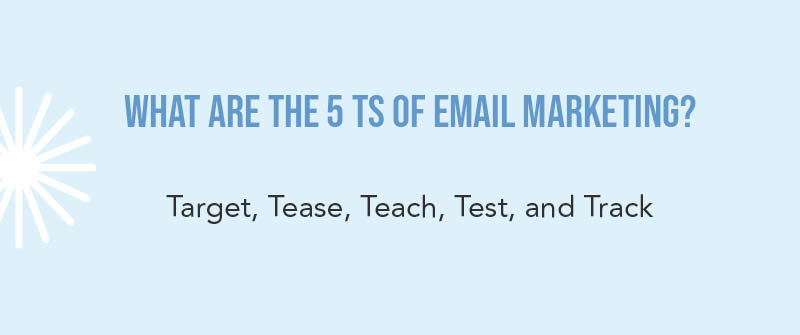
Introduction to the 5 Ts: Target, Tease, Teach, Test, Track
Understanding and executing the 5 Ts is the starting point for any high-performing enterprise marketing team. Target refers to audience segmentation and personalization, ensuring you’re speaking directly to relevant recipients. Tease draws in the recipient with compelling subject lines and preheaders that invite opens. AI tools can suggest subject lines that are likely to improve open rates, making this step even more effective. Teach delivers the promised value, educating or informing the recipient in every message. Test involves continuous experimentation—A/B testing subject lines, content, send times, and layouts to refine what works. Finally, Track means using analytics and advanced AI measurement to evaluate campaign performance and guide future strategy.
Examples of Using Each T in Practice
Let’s consider a real-world workflow. For Target, a global B2B SaaS firm uses behavioral data and AI-driven segmentation to build hyper-relevant lists, moving far beyond basic demographics. Platforms with multiple ai features can further assist by providing email writing assistance, send-time optimization, and personalized content recommendations, streamlining the entire email marketing process. Tease is applied by leveraging AI tools to draft subject lines that are statistically proven to lift open rates. When it comes to Teach, marketers deploy dynamic content modules to deliver fresh thought leadership or product education tailored to each audience segment. Test leverages AI-driven automation to run multivariate experiments across millions of emails, optimizing creative and timing factors in real time. And for Track, enterprise teams turn to sophisticated analytics platforms—like AudiencePoint—that move past vanity metrics and surface actionable insights about inbox placement and engagement quality.
Role of AI in Enhancing and Automating Each Stage
AI powers every single T more efficiently and effectively. For Target, AI sifts through mountains of behavioral, preference, and engagement data to build micro-segments you might not have identified manually. With Tease, natural language algorithms generate and test hundreds of subject lines, scoring them for predicted engagement before a single email is sent. In the Teach phase, AI curates relevant content for each subscriber using historic engagement and external triggers. Testing is revolutionized by AI’s capacity to automate complex test matrices, quickly flagging statistically valid winners. Automated workflows powered by AI streamline campaign management and improve efficiency by automating repetitive tasks and enabling more precise segmentation. And with Tracking, platforms like AudiencePoint deliver much more than traditional open rates—they provide deep insights into inbox placement, spam triggers, and subscriber-level engagement, closing the data loop for ongoing optimization.
Leveraging Free AI Tools for Testing and Tracking
While enterprise solutions like AudiencePoint offer unparalleled sophistication, free AI tools also lower the barrier to entry for experimenting with automation and analytics. Many platforms provide basic optimization, A/B testing, and email template suggestions at no cost, giving teams a playground for iterative learning. Digital marketers can leverage these tools to enhance campaign efficiency and personalization, making it easier to optimize engagement and results. However, as your campaigns scale in volume and complexity, investing in specialized solutions that deliver granular inbox placement and performance data—like AudiencePoint—becomes a strategic imperative for staying ahead. Don’t just settle for generic tracking; demand advanced visibility and control to maximize every aspect of your marketing fundamentals.
How to Effectively Use AI for Marketing
AI email marketing tools have redefined what’s possible for enterprise email marketers seeking to drive engagement, boost deliverability, and achieve meaningful results at scale. Effectively using AI for marketing means more than just automating routine tasks. Integrating AI into your overall marketing strategy leads to better personalization, increased efficiency, and improved ROI. It’s about strategically integrating artificial intelligence across every step of your AI email campaign workflow to optimize content, segmentation, deliverability, and ultimately ROI. Here’s how forward-thinking teams can harness AI to leap ahead of the competition.
Integrating AI Across the Email Marketing Workflow
A truly effective application of AI begins with workflow integration. Rather than isolated functions, the most successful enterprise campaigns leverage AI within each stage: from creative content generation and list segmentation to deployment scheduling and post-send analytics. For example, using an AI email marketing generator, content creators can quickly ideate high-performing subject lines, write compelling copy variations, and localize messaging at scale. This enables marketing executives to focus more on strategy and less on manual execution.
With AI-powered integration, personalization becomes seamless. Marketers can micro-segment audiences using behavioral models, previous engagement, geographic data, and more. AI-powered data collection from multiple sources—such as website interactions, purchase history, and social media—enables more precise segmentation and personalization. These atomic-level insights, processed instantly by AI, drive dynamic content assembly and hyper-relevant sends — the bedrock of modern email success.
Harnessing Predictive Analytics for Content and Timing
The next frontier in campaign optimization lies in predictive analytics. AI can analyze recipient engagement patterns (opens, clicks, conversions, bounces) and predict the optimal content, offer, and send time for each individual. By analyzing data, AI can identify trends and optimize campaigns for better results. Instead of relying on guesswork or basic rules, marketers can let AI models test and continuously learn, automatically adjusting campaign parameters to maximize inbox placement and audience impact.
Predictive send-time optimization, for instance, identifies exactly when recipients are most likely to engage — a massive advantage for high-volume enterprises struggling to stand out amid cluttered inboxes. These models don’t just increase opens; they help ensure the right message arrives at the right time for every contact, every send.
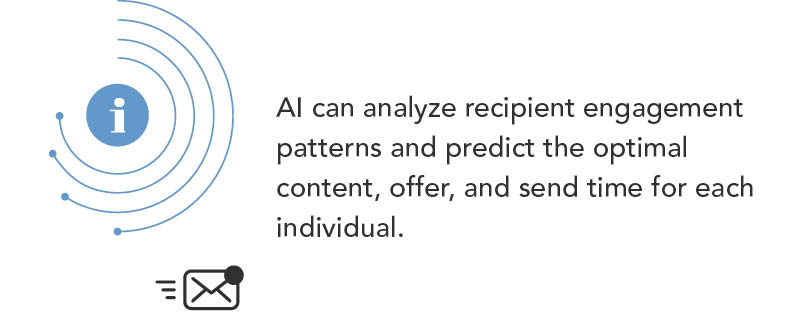
Enhancing Deliverability and Inbox Placement With Smart Tools
One of the greatest leaps forward with today’s AI tools, such as AudiencePoint, is the ability to address deliverability and, more importantly, inbox placement. Traditional methods, like seedlists or basic panel data, only provide a limited snapshot. By applying advanced AI to millions of real user engagement signals, AudiencePoint pinpoints exactly which emails land in the inbox versus the spam folder — a distinction that directly impacts ROI. Leveraging customer data helps refine deliverability strategies and improve inbox placement by enabling more accurate targeting and segmentation. Suppressing or reactivating addresses based on actual inbox status empowers marketers to protect sender reputation, improve overall placement, and keep deliverability issues at bay.
The insight provided by these tools transforms what was once a blind spot — inbox placement — into a precision-managed component of your email strategy.
Examples of Successful AI-Driven Email Campaigns
Industry leaders are already reaping the rewards of AI-powered email. For instance, a global retailer using AI-driven segmentation and dynamic content saw a double-digit lift in conversion rates, as every segment received tailored offers matching their behavior and purchase stage. By analyzing purchase history, AI can craft targeted recommendations and segment email lists more effectively, leading to increased engagement and higher sales. Another enterprise organization leveraged AudiencePoint to identify and resolve invisible inbox placement issues, resulting in a 15% improvement in inbox rates, directly translating to millions in additional revenue generation. These successes illustrate that AI is not just a buzzword; it’s a competitive imperative for high-performing marketing teams aiming to operationalize best practices, stay out of the spam folder, and drive superior business results.
Leveraging Free AI Tools for Email Marketing
As the email marketing landscape becomes increasingly complex, leveraging free AI tools for email marketing has never been more attractive, especially for enterprise marketers looking to experiment, validate use cases, and optimize workflows before committing to a large-scale investment. Today, there’s a growing array of accessible AI email marketing generators and automation solutions that deliver genuine value, even at the zero-cost tier. These tools can automate repetitive tasks such as list segmentation, scheduling, and testing, increasing efficiency and freeing up human resources for more strategic work. Understanding how to evaluate, integrate, and scale from these resources is a strategic imperative for forward-thinking marketing executives.
What Are the Best Free AI Tools for Email Marketing?
There are several respected free AI-powered platforms enterprise marketers can deploy to automate routine tasks and test AI’s potential in their campaigns. Notable examples include platforms offering subject line optimization, predictive send time analytics, basic personalization engines, and template design assistants. Tools such as ChatGPT for copy ideation, Google’s Gemini for data analysis, and free CRMs with AI features offer great entry points. Some of these AI tools can even generate an entire email from scratch, streamlining the creative process for marketers. These tools enable teams to automate first drafts, segment basic audiences, and A/B test creatives without heavy financial investment or long-term contracts.
Evaluating Features, Limitations, and Integration Options
While free AI tools offer a low barrier to entry, it’s vital to assess their limitations, especially for enterprises. Many restrict usage quotas, lack advanced reporting, limit integration options, or restrict API access—potential bottlenecks for large marketing operations. Savvy marketers should prioritize solutions that easily fit into existing tech stacks, offer clear upgrade paths, and have robust documentation or support communities. Test a handful of tools side by side with your team’s real-world workflows, measuring impact on open rates, engagement, and email automation efficiency. Document both wins and shortfalls for future reference when selecting premium solutions. Robust data analytics capabilities are essential for accurately measuring the impact of AI tools on campaign performance.
How to Get Started with Free AI Tools for Immediate Impact
Begin by identifying specific process gaps in your current email marketing efforts—whether it’s slow content creation, inconsistent personalization, or lack of segmentation. Deploy free AI email generators to rapidly draft headlines, body copy, or calls to action. Many of these tools can also generate entire emails, allowing you to quickly launch complete campaigns with minimal effort. Experiment with basic automation to schedule send times based on predictive analytics or automate audience segmentation using behavioral triggers. Most importantly, use the data these tools generate to start building a business case for additional AI investment—and refine your benchmarks for future upgrades.

Scaling up From Free to Enterprise Solutions
Once free tools prove their value and adoption grows within your marketing team, it’s time to consider a strategic transition to enterprise-grade platforms. Evaluate tools like AudiencePoint, which provide robust data integration, advanced deliverability monitoring, and actionable insights unavailable in most free tools. AudiencePoint’s industry-leading inbox placement analytics, scalable automation, and comprehensive compliance features are essential for organizations looking to maximize campaign performance and ROI at scale. With automated email workflows, marketers can trigger targeted email sequences based on customer actions, such as welcome emails, cart abandonment reminders, and re-engagement campaigns, further enhancing marketing automation and customer engagement. The learnings and baseline metrics captured during your free-tool phase provide a framework to justify this transition, ensuring you invest in tools that genuinely drive engagement and revenue.
Why Marketers Must Focus on Inbox Placement and AI Tools Like AudiencePoint
Inbox placement is the linchpin of effective email marketing and a non-negotiable for enterprises committed to maximizing return on investment (ROI). Simply getting emails delivered to a server is no longer sufficient; today’s brands must ensure that their messages actually appear in the primary inbox, not lost in the depths of spam or promotions tabs. With increased inbox filtering, privacy protections, and a deluge of marketing messages competing for every subscriber’s attention, focusing on inbox placement is the only way to guarantee your campaigns break through the noise and drive measurable revenue outcomes. Integrating AI into your strategy can help email marketing improve ROI by continuously optimizing deliverability and engagement.
Why Is Inbox Placement Increasingly Critical for ROI?
Achieving high email deliverability rates means little if your messages are relegated to spam or overlooked folders. What truly drives revenue, engagement, and customer loyalty is actual inbox placement. Improved inbox placement leads to higher customer engagement and better campaign outcomes, as more recipients interact with your emails. Top-tier marketers know that every percentage point improvement in inbox placement can translate to thousands—if not millions—of dollars in incremental value. As inbox algorithms become more sophisticated, even reputable senders can experience hidden placement issues that erode ROI and undermine campaign momentum. The brands leading the industry understand that monitoring inbox placement must be a core metric, not an afterthought.
How Do AI-Driven Platforms Like AudiencePoint Deliver Actionable Insights?
Traditional monitoring methods, such as seed lists and legacy panel data, are woefully inadequate for enterprise operations. These outdated approaches can’t represent your actual subscriber base and often miss nuanced engagement dynamics that influence placement. Modern, AI-powered solutions like AudiencePoint shift the paradigm by using real-world subscriber engagement signals—including open, click, bounce, spam, and unsubscribe events—across a vast behavioral data pool. By analyzing customer data, these platforms enable more precise targeting and improved deliverability. AudiencePoint’s advanced platform pinpoints where each email lands, identifies problematic list members or segments, and tracks ongoing deliverability at unprecedented depth. You gain clear, actionable insights—such as which subscribers are actually seeing your messages—so you can suppress, re-engage, or remediate with precision. The result? Enhanced list health, reduced attrition, and elevated campaign performance across every deployment.
What Are Real-World Outcomes From Embracing Advanced Inbox Placement Monitoring?
Enterprise brands leveraging AudiencePoint regularly achieve inbox placement rates of 95–100%, a benchmark that translates to superior campaign engagement and revenue. The shift is immediate: suppressed, unengaged, or spam-affected addresses increase overall sender reputation, remediated list sources improve data hygiene, and precisely targeted media mix strategies ensure every at-risk subscriber receives a brand impression via the optimal channel. With AudiencePoint’s early warning, marketers recover deliverability faster, avoid attrition, and cement their leadership in competitive markets.
Modernize Your Stack: Why Now Is the Time To Act
Executives and marketing leaders can’t afford to leave inbox placement to chance any longer. The future belongs to teams leveraging AI for real-time, data-driven insights and automated optimization at scale. With AudiencePoint, you transform email marketing from a guessing game into a science, maximizing both your mailable universe and campaign outcomes. Don’t let legacy tools sabotage your growth. Embrace the next generation of AI email marketing tools and secure your enterprise’s email revenue future. Adopting advanced ai technology is essential for staying competitive in the evolving email marketing landscape. Modernize your technology stack with AudiencePoint today and witness the results in your very next campaign.
The Future of AI in Email Marketing
The landscape of email marketing is on the cusp of dramatic transformation as AI becomes central to every major strategic decision. Forward-thinking organizations are already experiencing the transformative benefits of AI-powered email campaigns—from advanced personalization to unmatched accuracy in inbox placement monitoring. Looking ahead, generative AI will further automate content creation and personalization in future campaigns, enabling marketers to craft highly relevant and engaging emails with greater efficiency. As we reflect on the key insights explored throughout this guide, it’s clear that the marketers who embrace AI will lead the pack, consistently outperforming those who cling to legacy practices.
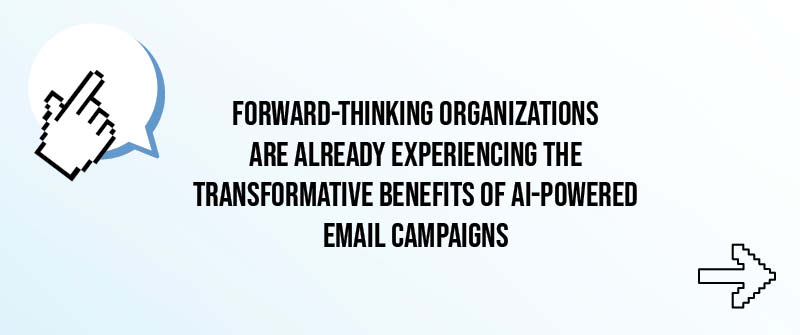
What Are the Next Big Trends for AI in Email Marketing?
The rapid advancement of artificial intelligence is ushering in a new era where automation, real-time analytics, and predictive capabilities are at the core of successful email marketing strategies. Soon, adaptive content powered by AI will respond dynamically to subscriber behavior, optimizing messaging at the individual level and in real time. Machine learning models will continuously refine segmentation and timing, minimizing human guesswork and maximizing ROI. The integration of external data sources—social signals, website behavior, and even offline events—will make targeting even more sophisticated. By analyzing browsing behavior, AI can deliver more relevant product recommendations and personalized content to users based on their preferences and past interactions. These trends point to a future where every campaign is data-driven, highly individualized, and delivered at precisely the right moment for optimal engagement.
How Will AI-Driven Inbox Placement and Deliverability Monitoring Evolve?
Traditional metrics like deliverability rates, while still important, have given way to a sharper focus on inbox placement. New AI platforms, especially those like AudiencePoint, are poised to set the industry standard by providing actionable insights that go beyond surface-level statistics. Expect to see AI models not only detect but also preempt delivery issues, recognize patterns leading to spam folder placement, and suggest real-time corrective actions. Further advancements will make these insights available instantly, allowing marketers to suppress problematic addresses, better manage sender reputation, and maximize inbox presence, resulting in more revenue from every single send.
What Should Enterprise Marketers Do Now To Prepare for the Future of AI in Email?
If the future belongs to those who prepare for it, then modernizing your email marketing stack with AI is non-negotiable. Enterprise marketers must audit current workflows and identify where legacy practices or limited data are holding them back. Automating data entry with AI reduces manual workload and increases efficiency, allowing teams to focus on higher-value marketing strategies. Prioritize adopting platforms that deliver transparency into the journey from send to deliver to inbox and beyond. Team up with partners whose technology aggregates massive industry data, like AudiencePoint’s database of trillions of real inbox events, to leap ahead in targeting, re-engagement, and deliverability. Those who lean into AI will not only protect their sender reputation but also continually refine segmentation to engage their best audiences and drive outsized results.
In summary, embracing AI today ensures your marketing team is equipped for tomorrow’s challenges—a world where inbox placement and high-performance campaigns aren’t just achievable, but expected. Don’t let your brand get left behind in the technological shift. Unlock the future of data-driven, high-converting email marketing by leveraging AudiencePoint’s unrivaled AI-powered insights. Our platform empowers you to make every send count: accurately identify inbox placement issues, proactively optimize deliverability, and convert more subscribers into loyal customers. Ready to experience the future of enterprise email marketing? Schedule your AudiencePoint demo now and join the industry leaders already capitalizing on advanced AI for unbeatable results.

